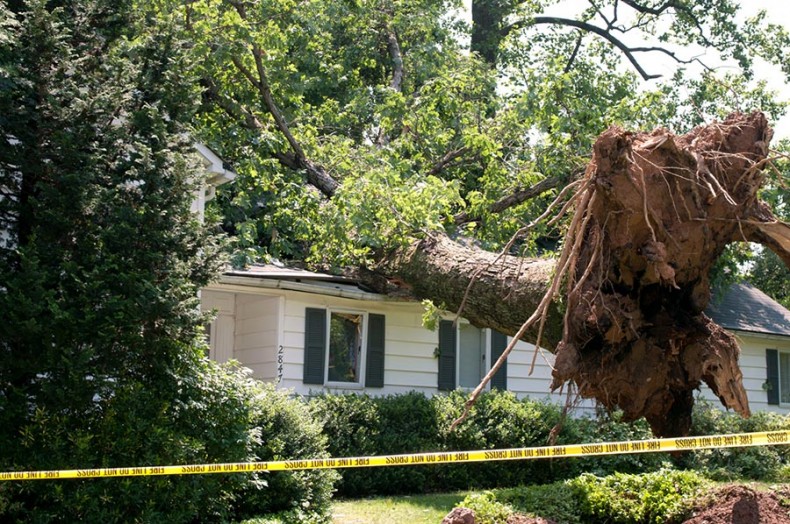Will your home withstand storm season?
Document it for insurance, shore up weak points

Year after year, Americans witness storms that cause damage and loss of life. And according to the North Carolina Department of Public Safety, North Carolina is among four southern states that have led the nation in the number of billion-dollar weather-related disasters since 1980. Most of those disasters are related to tropical storms.
The North Carolina coast is the most vulnerable to a direct hurricane strike, but inland cities and towns across the state can also be devastated by the high winds and potential tornados, flooding and landslides from hurricanes and tropical storms.
During hurricane season, from June 1 to November 30, you should have a family emergency plan in place and a family emergency supplies kit assembled. For your home, no matter where you live there are things you can do to protect it and your family.
Greg Beste, member of the American Institute of Architects Disaster Assistance Committee and project management director of IVI Assessment Services, offers some storm season preparation tips:
- Document your home, before disaster strikes. Grab your camera or smartphone and photograph your home now, covering the foundation and all interior and exterior spaces. At best, you’ll have a nice keepsake; at worst, a visual documentation that can be used for an insurance claim in case of disaster. You can also share the images with your insurance company right away for its files.
- Be an expert on your house. How old is it? What type of framing does it have? When was the roof last repaired or replaced? These are questions you should know, as they could dictate what changes should be made, either before or after a storm strikes.
Beste also has advice specifically about making your home more secure. For example, if high winds are a major worry for you, you could add an extra layer of protection by swapping out the shingles on your roof for a heavier material.
Or you could secure the roof sheathing with a more wind-resistant nailing pattern, using an extra box or two of nails. Know where your home is weakest; those spots are the first places to shore up in defense.
Also know that a safe room to shelter your family during a heavy storm doesn’t have to be high-tech. With the right construction and design, your mud room, laundry area or even a powder room can be a safe haven. (For more about safe rooms, visit fema.gov/safe-rooms.)
If you are building or rebuilding, consider designing beyond code. Building codes are the minimum standard and in many cases, have not been updated to reflect the current reality.
If you live in a particularly vulnerable area, an architect can advise on additional measures to take — for instance, in coastal areas, building a foot higher than the minimum flood zone would indicate is recommended. Resources like The American Institute of Architects’ website (architectfinder.aia.org) can help you connect with information and individuals you need.
If you’re working with an architect to build or retrofit your home, make sure that he or she understands the importance of resiliency and your building goals. Communication at every step is key.
—StatePoint
-
Share this story:


